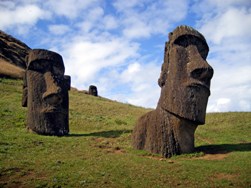
PIVOTAL
The pivotal question of whether the Anthropocene is enshrined in the geological timescale is now before a working group of the International Commission on Stratigraphy. Meanwhile, during 2011, The Geological Society of London has held another conference, The Anthropocene: A New Epoch of Geological Time? while the Geological Society of America’s annual conference theme this autumn is to be: Archean to Anthropocene; The Past is the Key to the Future. If the ICS does indeed decide that the Holocene ended and the Anthropocene began with the start of the Industrial Revolution, or the detonation of the first atomic bomb, or some other recent global marker, I would urge that an urgent, concerted and widespread communication strategy be brought immediately into action.
Living in the Anthropocene will require new attitudes, dedicated resources and new ‘more-than-the-sum-of-parts’ partnerships. With the Quaternary research community at the helm, the entire profession of geology should make common cause with astronomy, chemistry, climatology, ecology, physics, zoology, and cultural history, as well as anthropology, archaeology, biology, civil engineering, education, geography, meteorology, philosophy, psychology, and urban planning.
That geology’s holistic perspective should become integral to many important societal and scientific issues is long overdue. For the geological profession to become germane to these issues with maximum efficiency and effectiveness will require the advice of other professional disciplines specialising in how people engage with unfamiliar and complex subjects and make up their minds . The required ‘mental repositioning’ in the geosciences has a parallel in the current search for greater relevancy in science museums and exploratories . Although there is great urgency to adapting the mind-set of adult generations to long-term collective thought and action, forging a sustainable future also requires that we provide abundant opportunities to rekindle what child development research has shown to be our naturally inquisitive nature . In future, we have to do more than increase teachers’ knowledge of Earth history. There will be many more, higher ‘levels of need’, at which we must demonstrate the relevance of geology - both to gauging human impacts, and tackling future societal and environmental challenges.